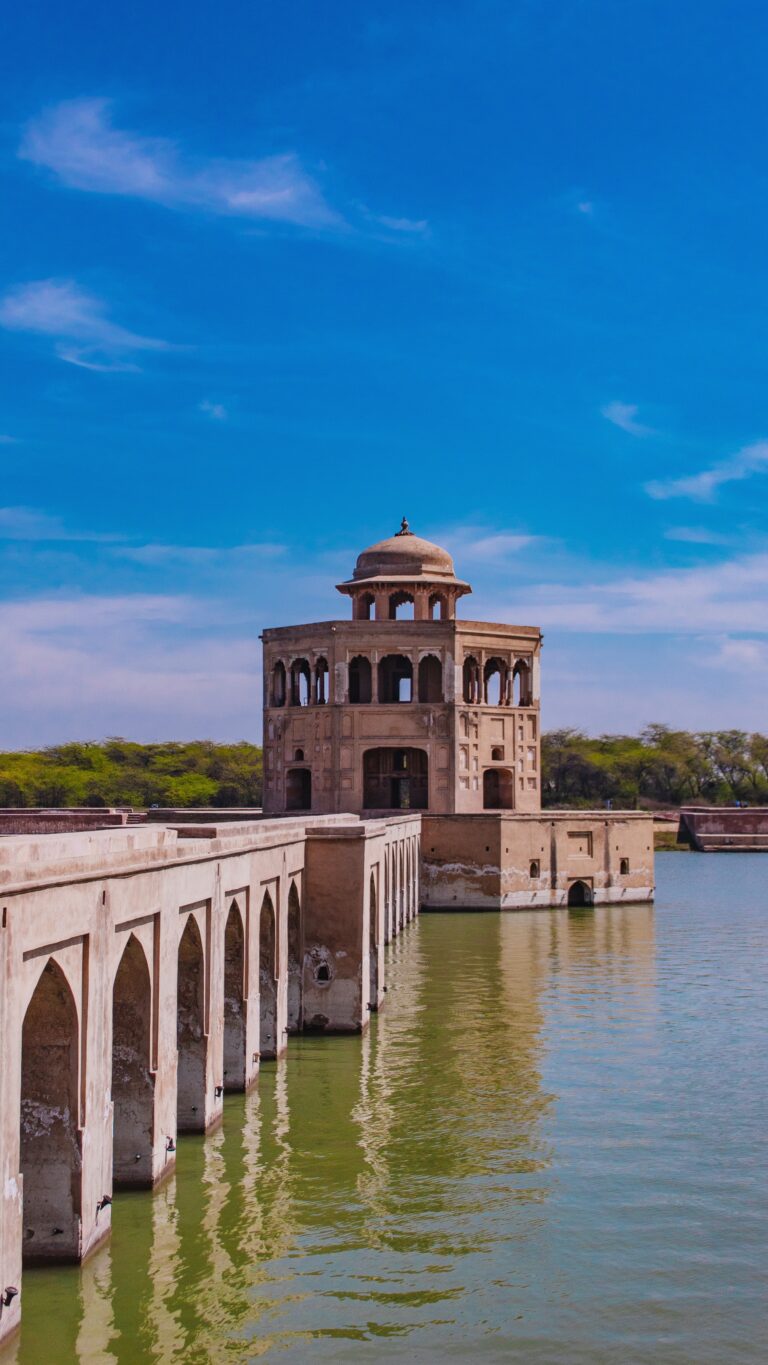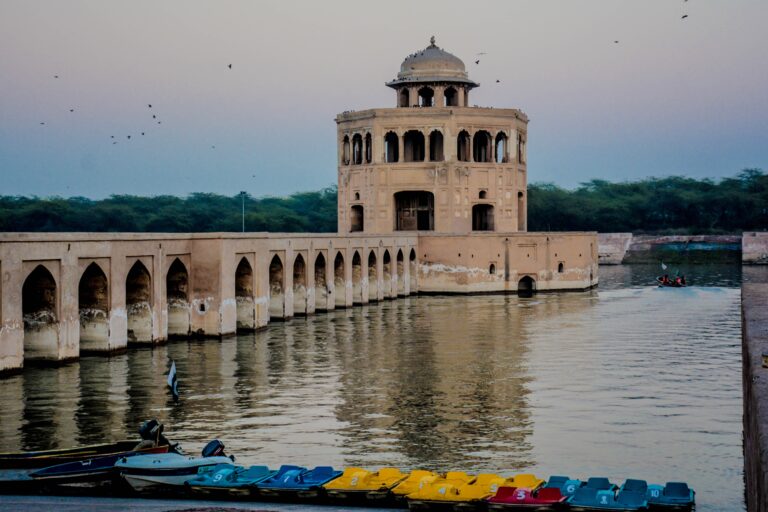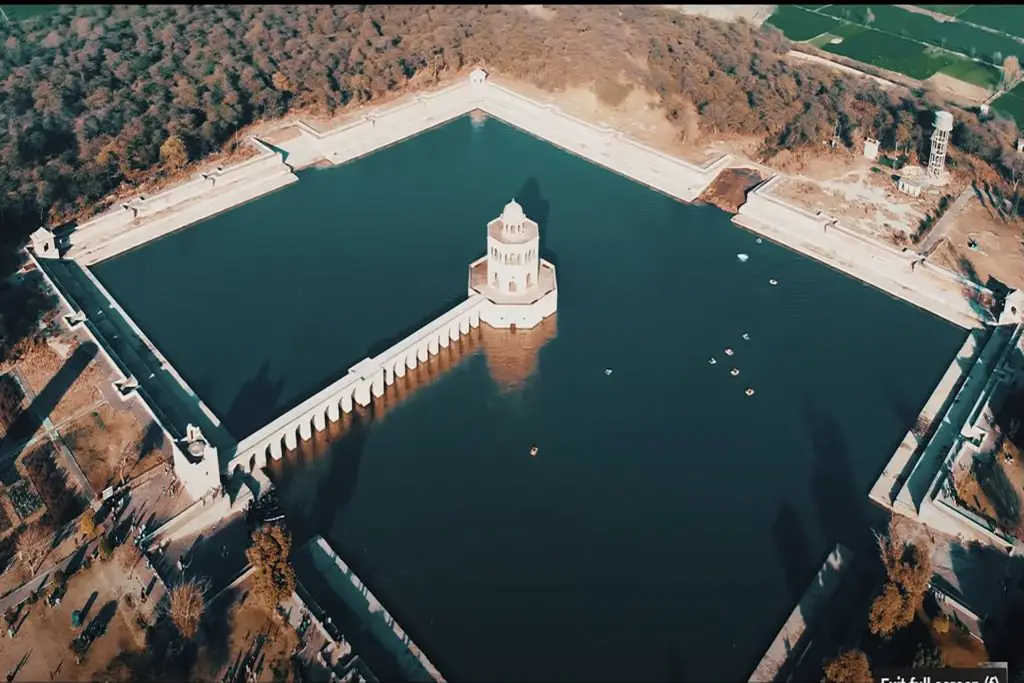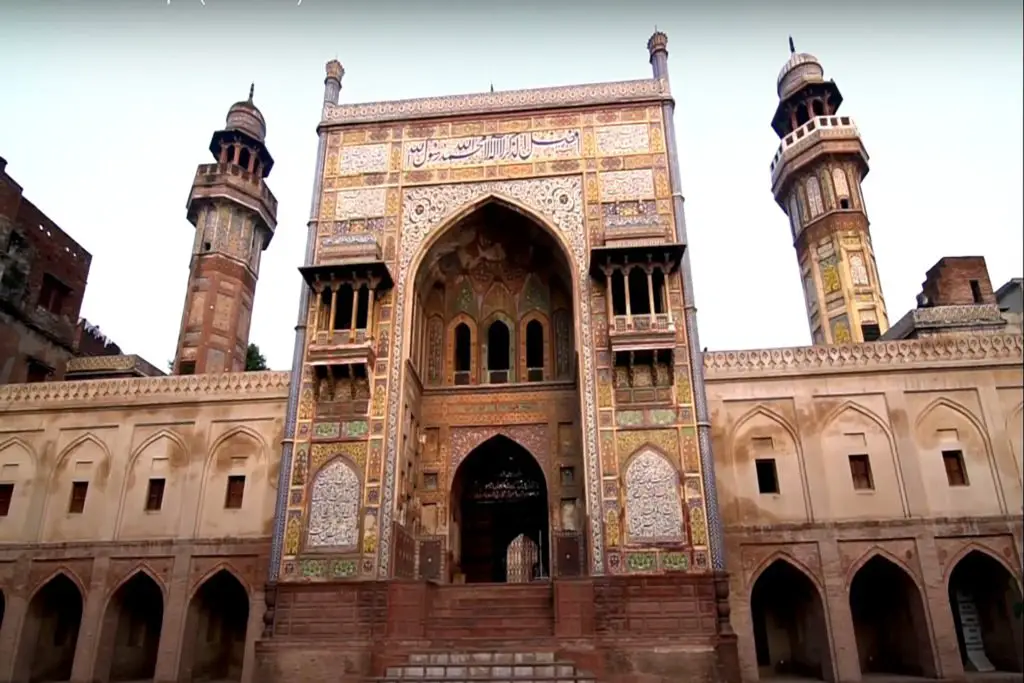History of Hiran Minar Sheikhupura
Hiran Minar Sheikhupura building was built in 1620 C.E. by order of Mughal King Jahangir as a symbolic symbol in memory of his beloved pet – the anaconda – after his death. It was called Mansiraj (Light of the Mind). The building was built in the suburbs of Sheikhupura in the heart of the park, which was used by the Mughals to enjoy a game of hunting and the experience of living in the desert near Lahore, which at the time was a large city.
The province of Punjab enjoys a rich history. It includes some of the most historic sites in Pakistan. Take the provincial capital of Lahore, for example, a large city with an entire ancient city of Wall, surrounded by its once bustling old streets. Shahi Qila, Shalimar Gardens, and Badshahi Masjid are some of the best examples of Mughal architecture found within the City of Lahore. While discussing Mughal buildings in the Punjab, one will never miss mentioning Hiran Minar Sheikhupura.
Hiran Minar, also known as Deer Tower, maybe a fascinating historical site, but it is certainly one of the most beautiful places to visit in Sheikhpura. This magnificent monument is ideally placed in the middle of a man-made lake. Despite being only 100 feet [100 m] high, the tower is visible from the surrounding area, as there are no buildings with many floors nearby.
ARCHITECTURE OF HIRAN MINAR SHEIKHUPURA
Hiran Minar Sheikhupura is a 30-foot (100-foot) tower with a large lake in its area. The architecture of the area boasts remarkable paintings and the sides of the tower are specially decorated with calligraphy in honor of the pet deer of Emperor Jahangir.
This triangular, triangular structure is located in the middle of the lake. The chattri on the roof, which is a stone gazebo, is one of the highlights of this historic building. The building of Hiran Minar Shekhupura looks very similar to Shah’s Pavilion (Sher Mandal), which is also a 16th-century historic building located in Purana Qila of Delhi.
HOW CAN YOU GET TO HIRAN MINAR SHEIKHUPURA?
Sheikhupura is easily connected to all major Pakistani cities by train and road. The Mughal architecture, Hiran Minar is located 3 km from the city center. Lahore and Gujranwala are nearby cities from Sheihupura. So, if you plan to visit the historic sites of Hiran Minar on the road from Lahore, then it will not take you about 1 hour to get there. Similarly, the journey from Gujranwala to Sheikhipura by car will take about 1.5 hours. The Islamabad-Lahore M2 Motorway is usually the fastest way to get to Hiran Minar, Sheikhupura.

Listed among the most beautiful places to visit in Sheikhupura, Hiran Minar’s historic monument has always been a magnet for tourists. Located close to the many urban centers of Punjab, it is frequently visited by people living in nearby areas on weekends and public holidays, especially in spring and winter.
This tourist attraction in Sheikhpura is surrounded by a lake and baradari, an old 12-hole structure us to allow free airflow. People who come here can experience history and nature nearby. The area is surrounded by a number of restaurants such as Spicy Door, Mansiraj Restaurant, and Gujjar Hotel, which offers local delicacies for tourists.
In addition, if you are a boater person, Hiran Minar Sheikhupura says you should visit. As mentioned above, this area is located in the middle of a large man-made lake, where you can now get some boating experience too.
In recent years, beautiful lighting arrangements have been made in Hiran Miran to enhance the beauty of the area at night and to accommodate visitors after dark.
The architecture of Hiran Minar Sheikhupura
Built of bricks, the Minar (tower) is round and the tapers are vertical, and flat, with a frame wall. There are 210 square holes in the outer area of the Minar, arranged at regular intervals of 14 rows. There is a spiral staircase with 108 steps inside the tower. Near the stairs, there are 11 climbing spaces with rectangular arches provided for air and light. Hiran Minar is divided into six sections of different lengths. The base of each section has a proposed shape and the lower section has an entry point.
The exterior and interior of the minar are muddy concrete, apparently with colorful paintings or a fresco line. Thick lime plaster applied over very low ceilings is divided into decorative panels or arched niches and horizontal belts with high ease. Facing the grand minar on the east side there is a large tank with a path leading to the baradari with an octagonal (square) built in the middle There is a square square on each corner with a gate to the baradar.
Inside the vestibule, there are two platforms. The interior walls are decorated with recessed niches, and the soffit of the domeshaped roof has the decoration of a honeycomb. Two 13-stop planes built on both sides lead to the roof. The exterior and interior surfaces have been painted in a traditional way and decorated with fresco paintings.
The tank has a rectangular shape, each side has a ramp and a parapet wall, and is surrounded by four 8 6teps stairs. During the Mughal days, the route was cut off from the Aik Rivulet and connected to the tank at its northwest corner; in addition, a detailed system was developed to fill the tank with rainwater from the pumping station. The main gate to the Baradar is a rectangular vestibule with a sharp arch surrounded by four similar but smaller holes, built one on top of the other.
The main road, standing on 21 arched pillars, connects the main barracks with the gate. A proposed square-shaped platform is provided in the middle of the road. The center of the tank is fitted with an octagonal platform with a low frame wall on all sides. Over the stage stands a beautiful baradari in the same system, The baradari was built under the orders of Emperor Jahangir in 1620 A.D. to be used as a royal residence.

Hiran Minar (literally, “deer tower”) is a hunting ground built by Emperor Jahangir in northwestern Lahore. It is erected as a monument to the emperor Mansraj, a favorite of the emperor. The monument stands 30 feet [30 m] high and 35 feet [10 m] wide at its base. Near the perimeter, there are 214 holes believed to have been used as the basis for the beheaded heads of animal animals captured by the emperor. This form and function are similar to the former tower, also known as the Hiram Minar, built at Fatehpur Sikri. It also resembles the Nim Serai Minar in Malda, whose guesses may have been used in a similar way to portray captured captives of local rebels.
To the east of the tower is a large rectangular tank with an octagonal bar in the center. The Baradar was used by the emperor as a royal escape route and was accessible by a bridge overlooking the west side of the tower. Small tracts mark the corners of the tanks and enclose the roof of the pyramids with doors on each side. On each side of the tank, there are shallow ramps that allow wildlife in the hunting park to have easy access to the water. The water level was maintained using a series of channels and drawers leading to the site.
Unlike nearby Lahore, the surrounding countryside is sparsely populated and very remote. The forest belt surrounds the site, continuing to protect it in a modern setting, allowing the visitor to experience the Mughal garden in an area that has changed little since its inception.
Mughal Emperor ‘Jahangir’ was a great defender of art and painting. It was during his reign that painting and architecture were given great prominence. Apart from art, Jahangir had a passion for hunting as well. ‘Hiran Minar’ is an example of his love for the Royal deer. This monument is unique in its design, layout, and architecture. The monument symbolizes the love of the Lion and its simple beauty and beauty.
This magnificent Mughal monument was erected in the hunting ground used by the Mughal dynasty. The park was built in a grove of trees and allowed Mughal kings to feel the desert near the state capital Lahore. The zoo was used as a park where visitors could enjoy a game of hunting.
The minaret itself was built in 1606 C.E. as a monument to the beloved deer of Emperor Jahangir, Mansiraj, or the “Light of the Mind”, who was trained to lure wild animals into a tank for hunting.
You can enjoy boating, fishing, and other fun activities. In the Lahore Islamabad driveway, there is a special exchange of the site which makes it easy to navigate the site
A beautiful royal palace you can see in Shaikhupura not far from Lahore. The restaurant is not there so plan your meal before going there. It is a great place to visit with family and especially children.
Hiran Minar is also a very good piece of Mughal architecture. Tourism development property in Sheikhupura City. But they need the attention of local authorities. The access point and the route from the entrance of the Motorway to Hiram Minar are sad. Security was very low, we just saw any officer check the area. Packing is great but neglected in care.
On top of all this, it is worth a visit to the place. People love to come and have a picnic here. A quiet and wonderful place for artists to paint a beautiful painting.
Hiran Minar Sheikhupura is a monument to the Mughal Monument, a peaceful, high-quality, winter-themed, easy day trip to Lahore.








